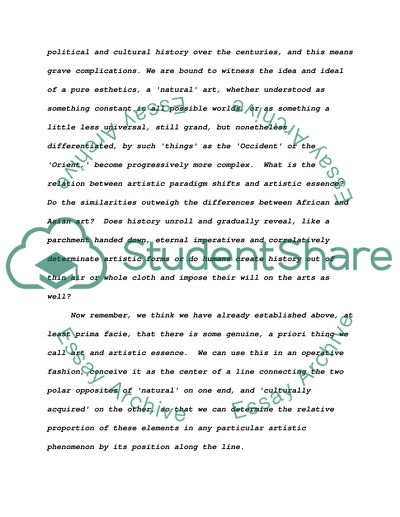Cite this document
(Is Art Natural or Cultural Assignment Example | Topics and Well Written Essays - 1500 words, n.d.)
Is Art Natural or Cultural Assignment Example | Topics and Well Written Essays - 1500 words. Retrieved from https://studentshare.org/culture/1724301-introduction-to-aesthetics-and-visual-culture
Is Art Natural or Cultural Assignment Example | Topics and Well Written Essays - 1500 words. Retrieved from https://studentshare.org/culture/1724301-introduction-to-aesthetics-and-visual-culture
(Is Art Natural or Cultural Assignment Example | Topics and Well Written Essays - 1500 Words)
Is Art Natural or Cultural Assignment Example | Topics and Well Written Essays - 1500 Words. https://studentshare.org/culture/1724301-introduction-to-aesthetics-and-visual-culture.
Is Art Natural or Cultural Assignment Example | Topics and Well Written Essays - 1500 Words. https://studentshare.org/culture/1724301-introduction-to-aesthetics-and-visual-culture.
“Is Art Natural or Cultural Assignment Example | Topics and Well Written Essays - 1500 Words”, n.d. https://studentshare.org/culture/1724301-introduction-to-aesthetics-and-visual-culture.


